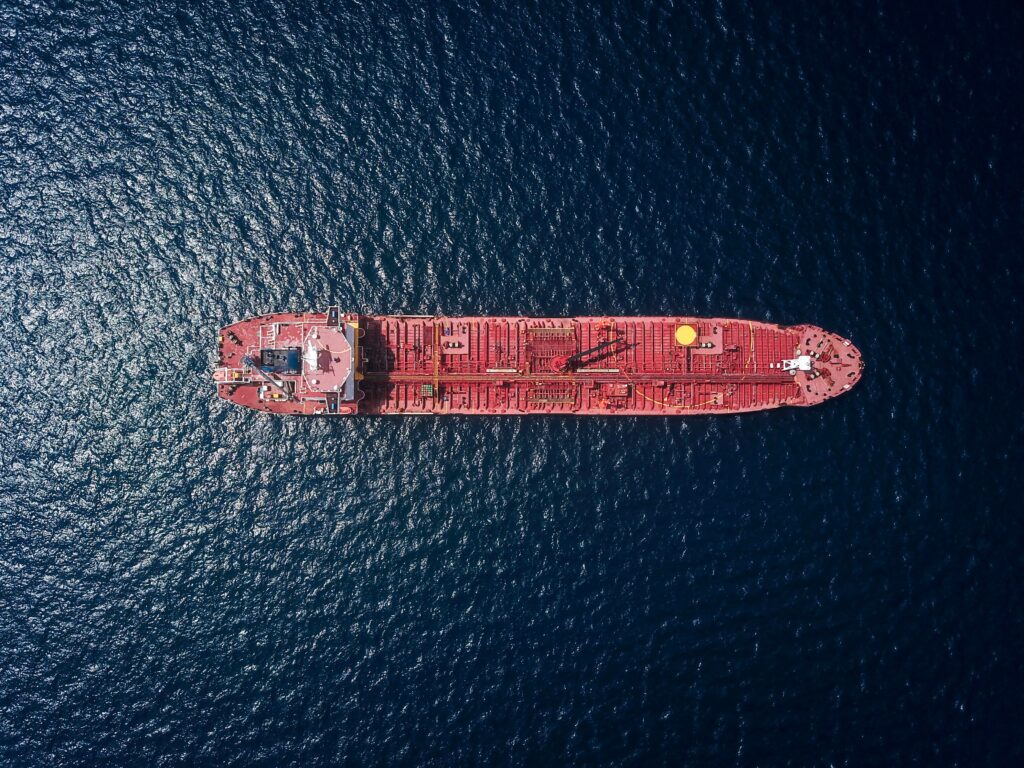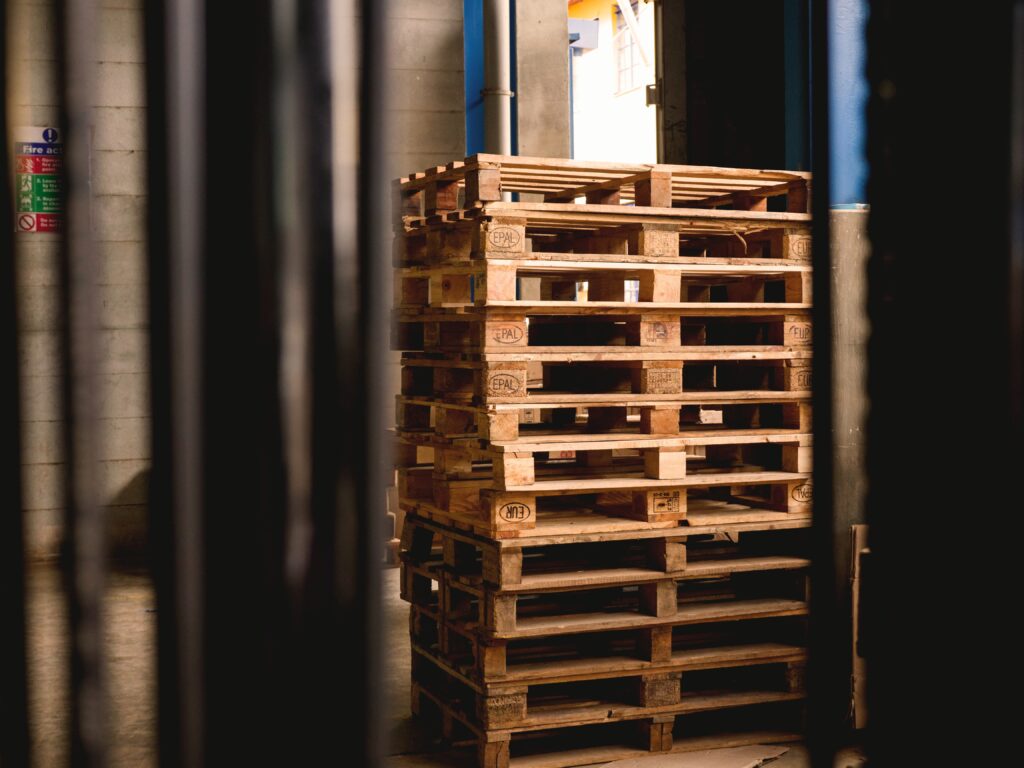Fulfilling consumer demand is central to the success of any company. However, in today’s global market, getting a product to a customer involves increasingly complex networks of people and resources. The network a product passes through from manufacturer to consumer is termed a ‘supply chain’.
Supply chains today face an array of challenges, including sustainability concerns and the aftereffects of continued global events such as Brexit and Covid-19.1 Additionally, the distribution industry faces recruitment deficiencies due to underdeveloped infrastructure and a lack of training opportunities.
Distribution companies must work closely within their supply chains to mitigate these circumstances and get products to customers as efficiently as possible. However, the key to securing the future of the supply chain is making distribution more sustainable. Companies must collaborate to consolidate order within their own schedules to reduce carbon emissions. Moreover, by investing in educational resources and better infrastructure, companies and governments can secure the distribution workforce for years to come.

What is supply chain logistics?
‘Supply chain’ is an umbrella term for everything involved in getting a product to a customer and describes a network of different people, activities, information, and resources. The process may also include a range of different organisations and companies, such as vendors, warehouses, transportation companies, distribution centres, and retailers.1 Though definitions of the term may differ between companies, members of the supply chain are typically engaged in a range of activities across an organisation, including development, marketing, distribution, finance and cash flow, customer experience, and procurement.1
‘Supply chain logistics’, however, refers specifically to the process of planning and executing the storage and movement of goods between the different points in the supply chain.2 Many supply chains operate on a global scale, and management of the various processes involved is central to the success of the global market.3 With such complex interdependencies, supply chains can easily fall prey to a ‘domino effect’, in which a small slip in the chain results in greater repercussions further down the line. Careful coordination of supplies, labour and facilities is therefore required to make sure that a product moves smoothly through the supply chain.2
Distribution companies need to prevent customers from experiencing supply difficulties as far as possible. They can do this by working with trend cycles, anticipating demand based on market insights, and working with a network of partners to optimise the transfer of stock.

Breaking the chain: Overcoming problems in the chemical supply chain
The life science and performance chemical supply chains face a unique set of issues. Due to the consumer-driven nature of both sectors, the market is challenging to predict, with customers often looking to buy smaller quantities of products more frequently. This is reflective of the wider push towards ‘de-stocking’ in the distribution industry, where companies are reducing their inventories as product consumption returns to pre-pandemic levels.4
Companies in the life science and performance chemical sectors must adapt to accommodate these market fluctuations.
Regulation
Major global events have further highlighted the need for chemical companies to have a thorough understanding of global market trends, putting greater emphasis on the importance of efficiency and a skilled workforce within the chemical industry supply chain.5 Post-Brexit import regulations, as well as the lasting impact of Covid-19, have introduced new parameters to which both the life science and performance chemicals distribution industries must adjust.
Shipping
Currently, shipping lines present a significant challenge. The stability of shipping prices is being impacted by the phasing out of older shipping vessels, resulting in reduced shipping capacity.6 Meanwhile, disparities between different industries present further difficulties; for example, the freight and haulage industries are less advanced than courier companies in terms of up-to-date data and analytics, leading to delays in communication. As consumer demand for transparency continues to rise, companies in the supply chain must overcome these problems and work together to coordinate more sustainable product deliveries.

People
Talent recruitment is an enduring problem for supply chains. With an ageing population, more needs to be done to bring young talent into the transportation sector. At a government level, improving the infrastructure, safety, and security associated with distribution roles would help to make the sector more appealing to young workers.7 Companies could tackle this issue by introducing internships and other training opportunities.

Power of collaboration
Cornelius understands the importance of open communication and prides itself on building strong relationships with the companies it works with. By collaborating with its logistics and warehouse partners, we are able to predict and prepare for challenges.
As a smaller company, Cornelius also maintains a close relationship with its customers. To mitigate the impact of global supply shortages, Cornelius collaborates with its customers to forecast product demands and build product inventories. We seek to build trust by notifying customers of expected changes to lead times, and, if a product is not available, we can assist by suggesting alternatives. Using our public reputation as a leader in the distribution industry, Cornelius utilises its market expertise to educate customers on their choices.
Leading by example, we take sustainable practices seriously, working with couriers that implement green schemes, consolidating supply with customers, and using sea freight stocks where possible. Cornelius promotes sustainability measures while maintaining efficiency, with the environmental team (E-team) looking to make further company policy amendments in 2023.

Working towards a sustainable future
To make the supply chain more sustainable in the future, it will be necessary for companies to share more information with each other. By working together to reduce the number of deliveries to customers, distributors could reduce CO2 emissions and reap cost and logistics benefits. However, this would require a major shift in mentality across the distribution industry.
One example of where collaboration currently occurs is in Less-Than-Load or Less-Than-Truckload (LTL) shipments, which is the practice of transporting smaller amounts of products, bypassing the need to rent a dedicated truck. By sharing the load, companies make full use of the carrying capacity of each vehicle, maximising fuel efficiency and reducing carbon emissions.8 Future collaboration could build upon this, laying the groundwork for innovative new sustainable practices.
In future, there also needs to be a greater investment into improving services for drivers and other transportation workers. Governments need to make improvements to road safety, infrastructure, and driver education. Businesses also need to be supported in attracting new drivers into vacant roles, for example through apprenticeship schemes.
Furthermore, the UK government introduced new greenwashing warnings in 2021.9 With mounting pressure not to make misleading claims, companies must increase transparency across all areas of their business in order to maintain the trust of their customers. As a distribution specialist, Cornelius aims to continue its policy of transparency and use collaboration to reduce supply chain complexity.
The supply chain will continue to face many challenges, and distributors must remain open and adaptive to meet customer demand. And in addition, substantial reform is needed to increase the sustainability and efficiency of the life science and performance chemical supply chains. As a distributor with a difference, Cornelius leverages its open approach to encourage and instigate change within the industry.
References
- Hayes, A. (2022). The Supply Chain: From Raw Materials to Order Fulfillment. [Online]. Investopedia. Last Updated: 30 July 2022. Available at: https://www.investopedia.com/terms/s/supplychain.asp [Accessed February 2023].
- Jenkins, A. (2022). Supply Chain Management vs Logistics: Differences, Similarities and Roles. [Online]. Oracle NetSuite. Last Updated: 25 July 2022. Available at: https://www.netsuite.com/portal/resource/articles/erp/supply-chain-management-vs-logistics.shtml [Accessed February 2023].
- Blume Global. (2022). The Differences Between the Supply Chain and Logistics. [Online]. Blume Global. Available at: https://www.blumeglobal.com/learning/differences-between-supply-chain-and-logistics/ [Accessed February 2023].
- Jones, D. (2022). Inventory spike rings alarm bells for retailers and manufacturers. [Online]. Investors’ Chronical. Last Updated: 5 July 2022. Available at: https://www.investorschronicle.co.uk/news/2022/07/05/inventory-spike-rings-alarm-bells-for-retails-and-manufacturers/ [Accessed February 2023].
- Harapko, S. (2023). woman with headset and tablet in warehouse How COVID-19 impacted supply chains and what comes next. [Online]. EY. Last Updated: 6 January 2023. Available at: https://www.ey.com/en_gl/supply-chain/how-covid-19-impacted-supply-chains-and-what-comes-next [Accessed February 2023].
- Dierker, D., Greenberg, E., Saxon, S., and Tiruneh, T. (2022). Navigating the current disruption in containerized logistics. [Online]. McKinsey & Company. Last Updated: 14 March 2022. Available at: https://www.mckinsey.com/industries/travel-logistics-and-infrastructure/our-insights/navigating-the-current-disruption-in-containerized-logistics [Accessed February 2023].
- Hind, S. (2019). How to recruit, train, and retain talent for Supply Chain 4.0. [Online]. McKinsey & Company. Last Updated: 11 February 2019. Available at: https://www.mckinsey.com/capabilities/operations/our-insights/operations-blog/how-to-recruit-train-and-retain-talent-for-supply-chain-40 [Accessed February 2023].
- (2022). Why LTL Shipments Are More Sustainable And Economical. [Online]. IEL. Available at: https://ielfreight.com/ltl-shipments-are-sustainable-and-economical/ [Accessed February 2023].
- Competition and Markets Authority. (2021). Greenwashing: CMA puts businesses on notice. [Online]. Gov.uk. Last Updated: 20 September 2021. Available at: https://www.gov.uk/government/news/greenwashing-cma-puts-businesses-on-notice [Accessed February 2023].